Queens Park
Queens Park was created in the area of Blackburn known as Audley which before the industrial revolution was an area of unenclosed moorland and farmland with a stream called Audley Brook where people came to bathe. The Church owned a large part of this land being the Audley Hall estate and the Ecclesiastical Commissioners gave the site to the town on condition that a road twelve yards wide be constructed to the site and around it. It was a very rough piece of ground. The park was designed by Mr. J. R. McCallum M.I.C.E. Borough Engineer assisted by Mr. A. Fidler of the Borough Engineer's Office. The contract for construction was let to a Mr. William Jenkins who satisfactorily executed the works. The initial cost was given as £10,000 but the final estimated cost in 1888 was £14,000 to £15,000. The area covered was thirty-three acres. The park was opened on the 20th of June 1887 by Edward VII, when he was the Prince of Wales. It was to commemorate Queen Victoria's Golden Jubilee. A crowd of twenty thousand came to the opening and caused quite a crush when rushing to exit after the opening ceremony. It took some time for the land and gardens to develop but by 1910 it was said to be a pretty spot well worth a visit from the inhabitants of the town. At the main entrance there was a very attractive house or lodge for the Park-Keeper and the park was easily accessible to all the people of Blackburn by tram.
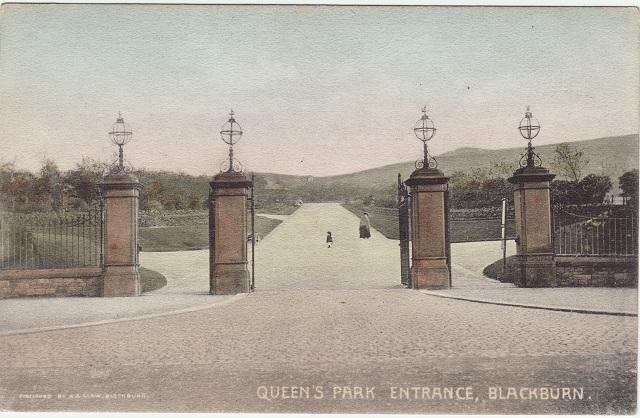
The Entrance to Queens Park from Queens Road
The serpentine lake of three and a half acres was completed by 1889 It was four feet deep and was reduced to one and a half feet in the winter for skating purposes. It was hoped that bathing would be permitted on summer mornings before a certain time. The boating was let to a Preston boat builder who would supply the boats, set a moderate charge and pay a percentage to the council. No boating to be allowed on Sundays. After fifty years, in 1936, the council took control of the boating and ordered new boats including some motorboats. By 1963 new boats were again needed. The price to use them at this time was two shillings for fifteen minutes in a two-seater and three shillings for a four-seater. The rowing boats were also still popular and collisions not infrequent much to the amusement of the participants.
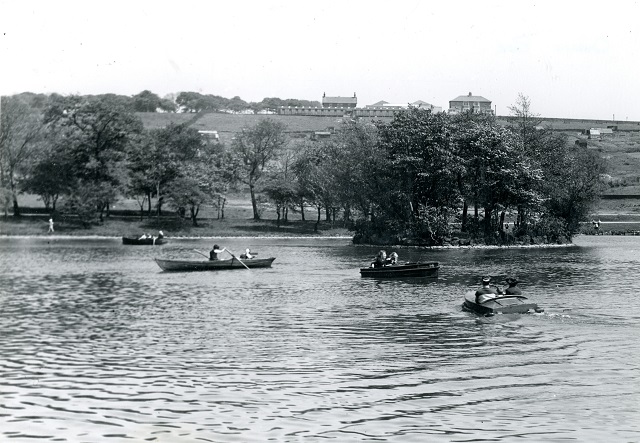
Queens Park Lake Showing Motorboats, Skiffs and Tubs.

Queen's Park Lake taken c.1948 by Alan Taylor (1928-2022)
of Darwen.
In 1903 the council decided to provide two bowling greens for public use. These were round greens with asphalted paths and bordered by flower beds and seats for spectators. They were extremely popular and a financial success, with a fine pavilion and tearoom. In 1932 two square greens, were created, providing useful work for two dozen men who had been unemployed. The grass used was acquired from the lawns at Pleasington Hall which the council had recently bought as a cemetery site.
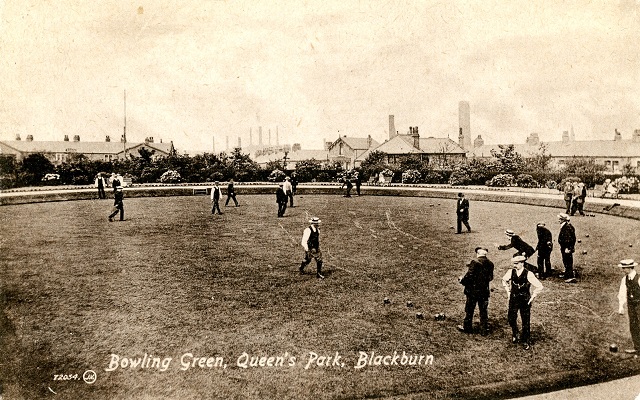
One of the Original Round Bowling Greens
Cricket was once played in the park but then the ground was levelled to make it more suitable and to provide work for the unemployed. Then only small boys were permitted to play cricket on one corner of the field. There was a play area with swings, a slide and other items for children and other open spaces which had not been designated for any activity as yet. Two tennis courts were situated between the site of the bandstand and the bowling greens, close to the road.
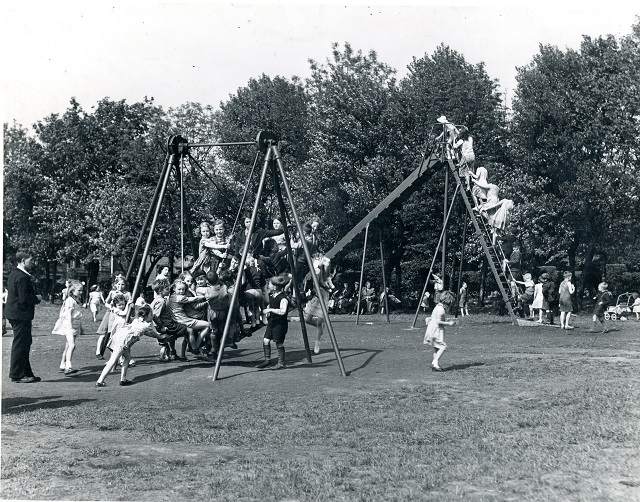
Childrens Play Ground in the 1950's or 1960's
A bandstand was opened in 1912 some twenty-five years after the park was opened, at a cost of £1500, it had seating for one thousand seven hundred and fifty people. Not everyone was keen on open air concerts and in 1935 the council wanted to demolish it and make a kiddie’s paddling pool but with a petition it was saved. Not long after, during the last war, the bandstand finally deteriorated and the area was made into a rose garden.
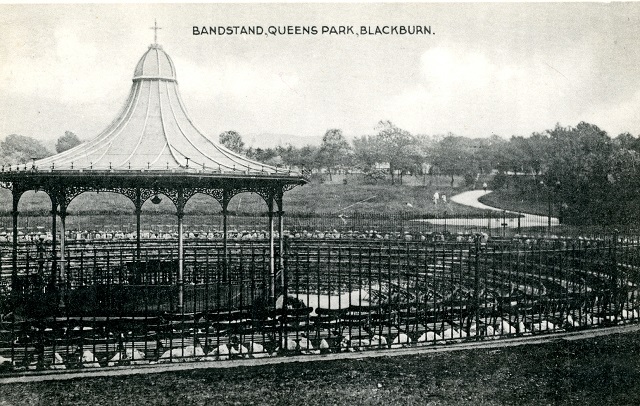
The Band Stand with Seating for 1750 People
On the hundredth anniversary of the park in 1987 two oak trees were planted near the boathouse and in that same year, eight cannons and a tank which had been placed at the top end of the park, were scrapped and the money was supposed to go towards the creation of putting greens. In 1992 forty trees were planted for the Golden Jubilee of Queen Elizabeth II.
Janet Burke
Published April 2024
The information above is from:
Blackburn Times
1st December1888
16th July 1910
20th August 1987
Northern Daily Telegraph
7th May1904,
Lancashire Evening Telegraph
8th April 1988
2nd September 2002
28th October 2013.

